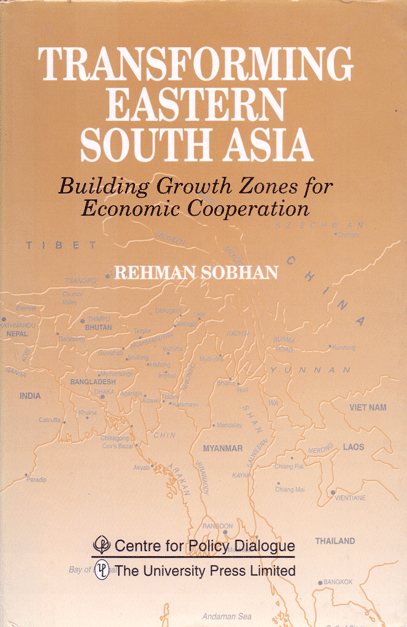- Shop
- Transforming Eastern South Asia: Building Growth Zones for Economic Cooperation
Transforming Eastern South Asia: Building Growth Zones for Economic Cooperation
https://uplbooks.com/shop/9840514970-transforming-eastern-south-asia-building-growth-zones-for-economic-cooperation-6492 https://uplbooks.com/web/image/product.template/6492/image_1920?unique=337f592
| Language: English |
Tags :
Book Info
This study addresses the issue of sub-regional economic cooperation between Bangladesh, Bhutan, Myanmar and India with particular emphasis on the regions of North East India. It discusses the scope and implications of bringing together the least developed eastern regions of South Asia along with their immediate neighbour, Myanmar, another least developed country within a growth zone designed to harness the collective resources of the area for the purposes of transforming a once backward area into a dynamic and prosperous region. In order to explore the scope for economic cooperation the study examines the structural features of the countries and sub-regions of eastern South Asia and Myanmar and generates a wealth of material about their economies and economic relations. The study then goes on to examine the underlying dynamics of designing a growth zone within this region through exploring the shared resource base and physical features of the region. Information and analysis on the scope for optimising the shared water resource base as well as integrating the transport and energy infrastructure are thereby examined in terms of their costs and benefits. The study assesses the political implications within the participating countries as well as in terms of interstate relations in the region and explores the geo-strategic implications associated with the emergence of such a growth zone. The study concludes with a proposed agenda for action designed to prioritize initiatives in the development of such a growth zone. Policymakers at the national level and within multilateral agencies committed to promoting regional and sub-regional cooperation in South and South East Asia should be particularly benefited by this study.

Rehman Sobhan
Professor Rehman Sobhan, is the founder of the Centre for Policy Dialogue (CPD), a leading civil society think-tank in Bangladesh which he currently chairs. He is also the Executive Director of South Asia Centre for Policy Studies (SACEPS). He served as member of a number of important national and international bodies including Member of the Caretaker Government of Bangladesh and Bangladesh National Commission on Money, Banking and Finance. He was a member of UN Committee for Development Planing, Government Council of UN University, Tokyo, Board of United Nations Research Institute for Social Development, Geneva, Executive Committee of the International Economic Association, Group of Eminent Persons appointed by SAARC Heads of State to review the future of SAARC. He also served



